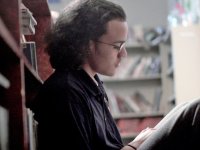Special Ed Best Practices Inspire Successful Expanded Learning Time for All Students
Your content has been saved!
Go to My Saved Content.In assembling the plan for expanded learning time (ELT) at the Edwards Middle School, we drew inspiration from our own special education department. Too often, special education is viewed as a place or a static state, when the truth is that special education is a series of interventions, modifications, and accommodations afforded to students who are unable to access a curriculum under routine circumstances. ELT, too, is a series of interventions, and so, in applying some special education principles, we gained some valuable insights.
We began with a key premise in special ed, that each child is an individual who learns differently. We discovered that this idea applied seamlessly to our entire student body in ELT. Because our goal for the first hour of ELT was to provide relevant academic support to each individual student, we had to focus tightly on the specific area of concern or need for each student. In building these plans we relied on teacher observation, student reporting, student work products, testing, and parent communication. At no point was disability factored into the equation. The same applied as we built our selection of extracurricular enrichment activities, so as to get the right mix of relevant and engaging art, athletic, and other activities. Every child with an IEP participates in both the academic and enrichment activities of ELT.
Throughout the ELT portion of the day, you can walk into any classroom and expect to view a diverse spectrum of students. You will find students with and without disabilities; native English speakers and students who speak English as a second language; and students from varying socio-economic, religious, and cultural backgrounds. Rather than treating ELT as a continuation of the school day, teachers have the freedom to address the underlying factors that may have limited students' overall academic success. Whether it is rules-based reading instruction, comprehension strategies, or math intervention, every student is able to benefit from targeted and individualized instruction that ordinarily could not be accomplished during the standard school day.
Enriching the School Community
By integrating the students based solely on academic focus, the Edwards staff has been able to eliminate old stigmas. By designing groups based on need and not achievement, students who once never interacted with each other during the core day are now sitting side by side with the understanding that, no matter their differences, they share a common academic challenge.
Additionally, the extracurricular portion of ELT has proven to be a great source of student engagement, pride, and community. In the past, our programming allowed for only a small group of students to participate in any after-school activities. The students that usually chose to participate were those who demonstrated more self-confidence, stronger interpersonal skills, and a greater commitment to school and self. ELT, by requiring every student to participate, allowed the school to create and offer a wide variety of activities, making it possible for every student to explore a wide variety of interests.
Here, too, ELT flourished in its inclusive design. Students who had once viewed themselves as having no value within the greater educational community, or who had viewed school as a place of no personal relevance, began to explore and demonstrate their strengths. Students diagnosed with emotional or intellectual impairments now work side by side with their non-disabled peers in areas such as rocket design, break dancing, football, art, poetry, music, theater, and cooking. It's no accident that our attendance rates have increased by 38 percent.
As an educator, when you see friendships being forged, student achievement growing steadily, and school becoming a place where almost all your students feel they belong, you know you are doing something right. More important and even more satisfying, you know you are making a difference in their lives.
Edwards Middle School
Enrollment
534 | Public, UrbanPer Pupil Expenditures
$7651 School • $17283 District • $13658 StateFree / Reduced Lunch
82%DEMOGRAPHICS:
38% English-language learners
24% special needs
